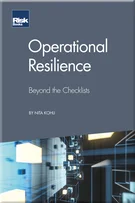The Emergence and Concepts of the SIMM Methodology
Martin Dahlgren and Tomo Kodama
Introduction
Variation and Initial Margin in the ISDA Credit Support Annex
Variation and Initial Margin Required by Central Counterparty Clearing Houses
Margin Requirements for Over-the-Counter Derivatives: A Supervisory Perspective
The Emergence and Concepts of the SIMM Methodology
The ISDA Standard Initial Margin Model Backtesting Framework
The Impact of Margin on Regulatory Capital
XVA for Margined Trading Positions
Modelling Forward Initial Margin Requirements for Bilateral Trading
Forward Valuation of Initial Margin in Exposure and Funding Calculations
Margin Value Adjustment for CCPs with Q-Simulated Initial Margin
Bilateral Exposure in the Presence of Margin
Central Counterparty Risk
Robust Computation of XVA Metrics for Central Counterparty Clearing Houses
Efficient Initial Margin Optimisation
Procyclicality in Sensitivity-Based Margin Requirements
Systemic Risks in Central Counterparty Clearing House Networks
4.1 INTRODUCTION
The purpose of the IM of the UMR is to offset a large amount of potential adverse mark-to-market (MtM) movement that can occur over a “short” time horizon in the case of a credit event. The general guidance is given by the Working Group on Margin Requirements (WGMR), formed jointly by the Basel Committee on Banking Supervision (BCBS) and the International Organization of Securities Commissions (IOSCO), on margin requirements for non-centrally cleared derivatives (Basel Committee on Banking Supervision and Board of the International Organization of Securities Commissions 2015):
Margin requirements for non-centrally cleared derivatives would be expected to reduce contagion and spillover effects by ensuring that collateral is available to offset losses caused by the default of a derivatives counterparty.
Individual regulatory authorities across jurisdictions have since started to develop their own margin rules consistent with the final framework. The SIMM methodology developed by the ISDA WGMR risk classification and methodology (RCM) work stream aims to satisfy the regulatory requirements together with a variety of practical constraints and complications
Copyright Infopro Digital Limited. All rights reserved.
As outlined in our terms and conditions, https://www.infopro-digital.com/terms-and-conditions/subscriptions/ (point 2.4), printing is limited to a single copy.
If you would like to purchase additional rights please email info@risk.net
Copyright Infopro Digital Limited. All rights reserved.
You may share this content using our article tools. As outlined in our terms and conditions, https://www.infopro-digital.com/terms-and-conditions/subscriptions/ (clause 2.4), an Authorised User may only make one copy of the materials for their own personal use. You must also comply with the restrictions in clause 2.5.
If you would like to purchase additional rights please email info@risk.net






